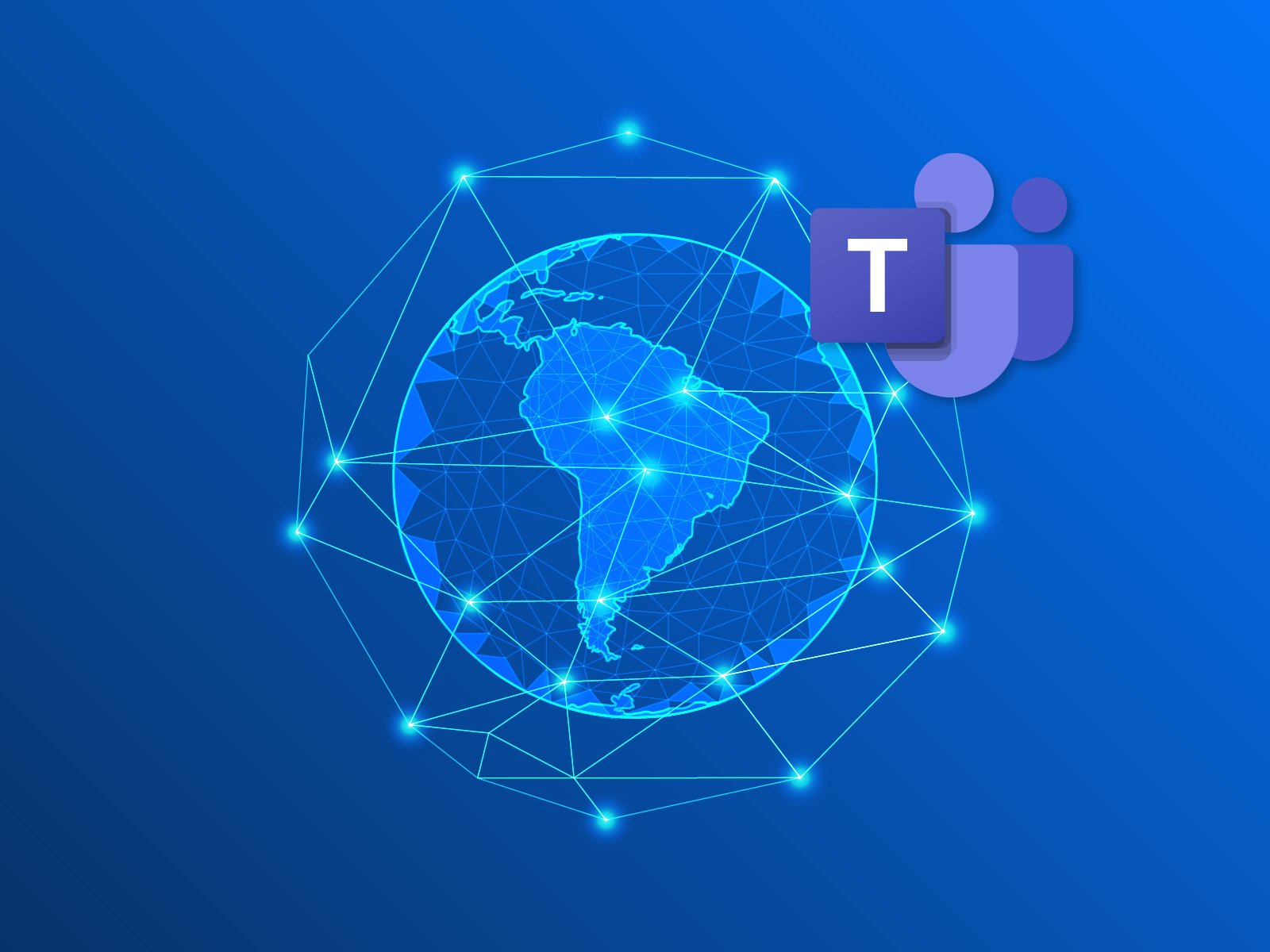If your business uses Microsoft Teams as its primary collaboration hub, adding voice capabilities is probably high on your list. Teams Phone makes it possible to call anyone, anywhere, straight from the Teams interface – and it's become a popular way for organizations to bring voice and collaboration together.
More than 20 million people are already using Teams Phone with PSTN connectivity as of 2024,1 so it’s clear that companies are looking for voice services that work seamlessly inside the tools they already use. But before you can integrate voice into Teams, you’ll have to decide between the two most popular options: Operator Connect or Direct Routing for Microsoft Teams.
Not sure which solution is right for your business? In this blog, we’ll break down the differences between Operator Connect vs Direct Routing, how each works, and when to choose one over the other.
What Is Operator Connect?
Operator Connect is a Microsoft program that allows certified telecom providers to connect organizations’ Teams environments to the PSTN (Public Switched Telephone Network). It’s designed to keep things simple: no on-premises hardware, no complex configurations.

With Operator Connect, you manage everything through the Teams Admin Center, from selecting a provider to assigning numbers and enabling features. Your chosen provider handles the voice service itself, and Microsoft facilitates the connection behind the scenes.
For many organizations, Operator Connect is a quick, cloud-first way to get enterprise-grade voice in Teams without a lot of overhead.
What Is Direct Routing?
Direct Routing for Microsoft Teams also connects Teams to the PSTN, but it gives you more control over how that connection is managed. With this model, you use a certified Session Border Controller (SBC) to link Teams to a SIP trunk or your telecom carrier of choice.
You can host the SBC yourself or work with a provider that offers Microsoft Direct Routing as a Service. Businesses often use this approach when they need to integrate with their existing systems, support complex call flows, or work with providers that aren't part of the Operator Connect program.
Operator Connect vs Direct Routing: What’s the Difference?
Let’s take a closer look at the general differences between Operator Connect vs Direct Routing across a few important areas:

Setup
- Operator Connect: Fully cloud-native and managed through Microsoft’s interface. No SBCs to deploy, and provisioning is streamlined through the Teams Admin Center.
- Direct Routing: Requires technical setup, usually involving a certified SBC. This can be hosted in the cloud or on-premises and takes more planning and expertise to configure.
Winner: Operator Connect. If you want to voice-enable Teams quickly without getting deep into technical setup, Operator Connect makes it easy.
Customization
- Operator Connect: Offers standard voice features out of the box but doesn’t support deep customizations or hybrid deployments.
- Direct Routing for Teams: Offers full control over call routing, integrations with legacy PBX systems, and support for hybrid or analog environments.
Winner: Direct Routing. If you need to integrate with older systems or customize complex call flows, Direct Routing gives you the flexibility to do that.
Management
- Operator Connect: Managed directly through Teams Admin Center, so it’s easier to handle user provisioning, number assignments, and basic support.
- Direct Routing: Often requires telecom expertise or a managed service provider to configure and maintain the SBC.
Winner: Operator Connect. Centralized control in a familiar interface reduces the day-to-day effort for IT teams.
Global Availability
- Operator Connect: Depends on the availability of participating providers in each region.
- Direct Routing: Allows businesses to work with local carriers or global SIP trunking partners.
Winner: Direct Routing. If you operate in multiple countries or need to comply with local telecom regulations, Direct Routing lets you choose the right carrier in each region.

Reliability
- Operator Connect: Routes voice traffic through Microsoft-approved, geo-redundant connections. SLAs are managed by the provider.
- Direct Routing: Depends on the provider’s architecture and how the SBCs are hosted.
Winner: Tie. Both options are highly reliable when implemented properly. The key is choosing a provider with a solid infrastructure and support model.
Features
- Operator Connect: Supports Teams Phone features like call queues, auto attendants, and voicemail.
- Direct Routing: Supports Teams Phone features plus advanced routing, third-party SBC integrations, and on-premises interop if needed.
Winner: Direct Routing. For organizations that want advanced functionality or need to bridge cloud services with existing on-prem equipment, Direct Routing offers more options.
Microsoft Operator Connect vs Direct Routing: Pros and Cons
Still not sure which is right for your business? Here’s what each solution brings to the table.
Pros of Operator Connect
Operator Connect is a great option for anyone looking for a fast and straightforward path to Teams voice. It’s fully managed through the Microsoft Teams Admin Center, eliminating the need for on-premises equipment or certified SBCs. That means fewer technical hurdles for IT teams and a smoother deployment experience overall.
Another advantage is that Operator Connect providers are certified by Microsoft and deliver voice services through a reliable, cloud-native infrastructure. This ensures a consistent level of quality and support while allowing your team to focus on adoption and user experience instead of backend complexity.
Cons of Operator Connect
While Operator Connect is simple, it may not be the best choice if your business needs to support legacy PBX integrations or advanced routing. And because availability depends on regional providers, finding Operator Connect providers with reach across global operations can be difficult.

Pros of Direct Routing
Direct Routing lets businesses create tailored call flows, support hybrid deployments, and incorporate third-party compliance tools like call recording – all of which are difficult or impossible to do with Operator Connect alone.
It also offers more carrier flexibility. With Direct Routing, you can choose the telecom partners that best suit your global footprint, pricing requirements, or regulatory obligations.
Cons of Direct Routing
Direct Routing can require more planning, technical expertise, and time to deploy than Operator Connect. For IT teams with limited voice expertise or lean resources, the initial setup might feel like a heavier lift.
When To Choose Operator Connect
Operator Connect is a strong fit for organizations that:
- Already use Microsoft Teams for collaboration
- Want a simple, cloud-native telephony solution
- Don’t have complex call routing needs
- Prefer to manage users and numbers inside Microsoft 365
- Want faster deployment with fewer moving parts
It’s especially helpful for SMBs, mid-sized enterprises, and enterprises looking to modernize their communications stack and replace on-prem systems.
When To Choose Direct Routing
Direct Routing for Teams makes sense for businesses that:
- Require deep call flow customization
- Need to integrate with on-prem PBX or analog devices
- Operate in countries where Operator Connect isn’t available
- Have strict compliance or call recording requirements
- Want full control over carrier choice and infrastructure
For businesses that span multiple geographies or rely on complex voice workflows, Direct Routing offers the control and adaptability to build the setup that’s right for you.

Direct Routing vs Operator Connect: Which Is Better?
There’s no universal answer – both Operator Connect and Direct Routing are strong options for enabling Teams Voice. The right fit will depend on your organization’s technical requirements, deployment goals, and internal resources.
Here’s an easy way to think about it: Operator Connect is a streamlined path since it’s fast, reliable, and easy to manage. Direct Routing takes a little more planning and technical involvement, but it offers maximum flexibility and customization.
Ultimately, both options will give your organization voice calling within your Microsoft Teams environment. It all just comes down to how much control, customization, and geographic reach you need.
Get the Best of Both Worlds With UniVoIP
Choosing between Operator Connect and Direct Routing doesn’t have to be complicated. At UniVoIP, we make it easy to get started with Microsoft Teams Voice through either deployment model, with a focus on simplicity, reliability, and personalized support.
As a certified Microsoft Solutions Partner, we help you voice-enable Teams with streamlined onboarding, seamless number porting, and end-to-end project management. Whether you need the simplicity of Operator Connect or the control of Direct Routing, our solution engineers will help you align Teams Voice with your specific business goals.
Contact us today to learn how we can help you bring reliable, enterprise-grade voice to Microsoft Teams – on your terms.
Sources:



